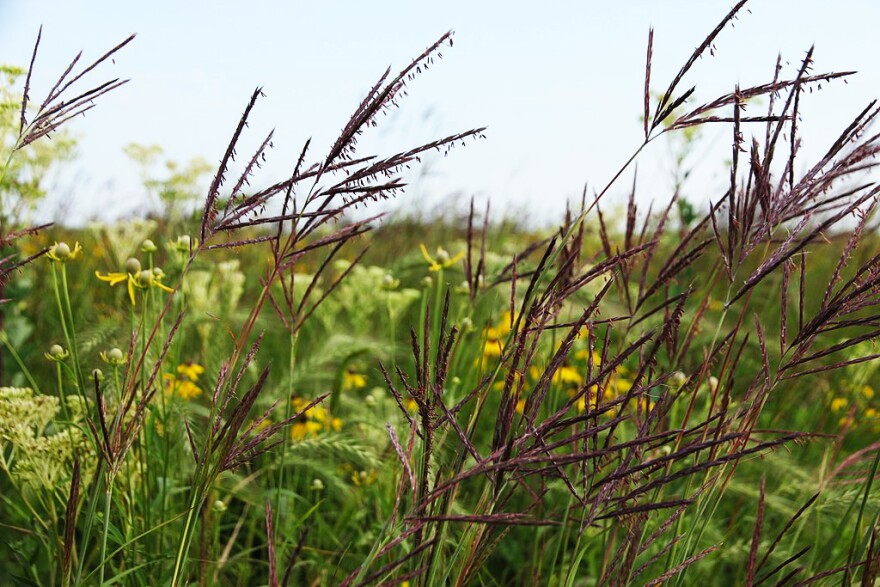Big Bluestem.
Used to be, there were far more of them than there are of us. Tall and spindly, it grew up every

summer from a thick bundle of shorter stuff at its base, like a grass skirt, a thicket that a host of critters thought of as home. Spindly and thin up top, Big Bluestem, the tallest of our native grasses, gets tossed around so mightily by gusty winds that not even a goldfinch can hold on. But the skinny stem doesn't break, it just waves, waves away, waves beautifully, waves like an inland sea.
You can still find it dancing here and there in restored prairie or in forgotten corners of the country too steep or crooked to take a plow. You can pick up a bunch from a garden shop and
plant it in your own backyard. Don't worry--it'll take. It does most anywhere. It's not picky. In fact, people who know such things claim it can still get aggressive if you let it alone somewhere, if you just let it be. A half acre maybe. Maybe more.
But here’s the thing: big bluestem waves out gorgeous tributes, but it doesn't make for great pasture. Those who know say cattle love it too darn much--some ranchers call it "ice cream for cows." Way back when, big bluestem suited crowds of buffalo just fine, but they were smart enough to graze only every other year or so because big bluestem won't stand up to constant grazing.

Some call Big Blue "turkey foot" for the three-pronged head it grows up top like a little joke

late summer. It's especially beautiful this time of year--late summer to fall--when it takes on its own royal robe: those long stems burn nicely into purple--and amber once the snow flies. But the truth is, beauty in native prairie is an acquired taste. Trust me, it can be as fancy as a flower shop, but it'll never be in a greenhouse. There are no hybrids, just a colorful bunch of old friends happy to be around together.
Wouldn't hurt us to remember that we'll be indebted to big bluestem for a long, long time because it once stood all around and grew remarkable roots four or five feet deep, deep and heavy roots that created our own rich prairie sod.

The poet William Cullen Bryant once described riding through the big bluestem prairie our world once was:
As o’er the verdant waste I guide my steed,
Among the high rank grass that sweeps his sides
The hollow beating of his footsteps seems
A sacrilegious sound.

Still not convinced? How about Walt Whitman, who wanted like nothing else to be "America's poet." Listen to him from "Specimen Days":
As to scenery (giving my own thought and feeling), while I know the standard claim is that Yosemite, Niagara Falls, the Upper Yellowstone and the like afford the greatest natural shows, I am not so sure but the prairies and plains, while less stunning at first sight, last longer, fill the esthetic sense fuller, precede all the rest, and make North America’s characteristic landscape.”
Let me remind you that right here in this passage, Walt Whitman is talking about home. Ours.






